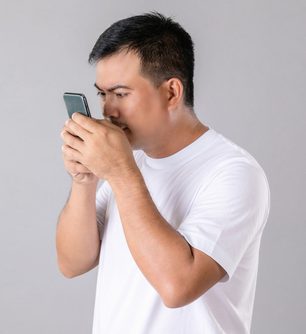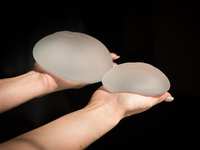Myopia, Dry Eyes, and Mac D, Oh My!

You may not realize it, but increased usage of electronic screens results in significantly increased risk for myopia, aka nearsightedness. Nearsightedness is when close objects appear clear but distant objects are blurry. Excessive use of computer monitors, smartphones, and tablets also causes the glands that keep your eyes moist to atrophy, resulting in dry, sometimes painful eyes. This is caused by the fact that we blink less frequently when staring at a screen.
When the eye is forced to stare at something too close, the brain and eye adjust or accommodate to increase close up vison. Over time, the squeezing of muscles used to make that adjustment can elongate the eyeball, causing myopia. This is especially concerning for children and youth whose eyes are still developing. Dr. Vivian Hill, a Calgary-based pediatric ophthalmologist and surgeon, emphatically tells parents with children less than one year old that they should not be exposed at all to electronic screens! She recommends all children reduce screen time and increase outdoor activity. She has observed an alarming rate of progression of myopia in children under 12 years old.
Hill stresses that daily exposure to natural sunlight, which releases dopamine in the retina, possibly slows the elongation of the eye and changes to visual acuity. Research published in June 2022 found that the rate of myopia in children aged 5-17 who live in urban areas is 41%. Children who live in rural areas and tend to spend more time engaged in outdoor activities have a myopia rate of just 15.7%! Additionally, adequate sleep is essential for protection and proper development of the eyes for both adults and children.
Lutein is an essential nutrient for the eyes. It is very efficient at filtering out blue light- the type that comes from cellphones, computers, tablets, and LED lights. Moreover, blue light induces oxidative stress, increasing risk for macular diseases. The body does not produce lutein. It must come from diet or supplementation. Particularly rich sources of lutein include dark leafy greens, broccoli, red and yellow peppers, avocados, cherries, carrots, egg yolks, raspberries and paprika. Our eye health is another good reason to eat 5 or more servings of vegetables and fruits every day.
Other than sunlight and a healthy diet, another interesting approach to prevent or reverse nearsightedness is call the Bates Method. Dr. William H. Bates identified this method over 100 years ago. It was so effective that optometrists in New York lobbied local politicians to have it banned because it cut into their optometry business! Today this method is still taught by Bates Method International. The method is simple. First, sit while leaning forward with your elbows on a table or a stack of pillows and relax the shoulders and body. Second, place the center of your palms over your eyes and relax like this for at least two minutes. Third, remove your hands, open your eyes, and notice whether anything looks clearer. Usually, it will.
Bates was also a proponent of sun exposure to the eyes to help correct vision problems, and recent research suggests he was right on track 100 years ago!
Get some sunshine, extra sleep, and extra veggies. See Well. Be Well.
Ref:
https://takecontrol.substack.com/p/excessive-screen-time-myopia
CBC News April 23, 2023
Nature March 18, 2015; 519(7543): 276-278
J Ophthalmic Vis Res October-December 2021; 16(4): 531-537
Review of Myopia Management February 1, 2023
Investigative Ophthalmology & Visual Science June 2022; 63: 244 – A0098


















